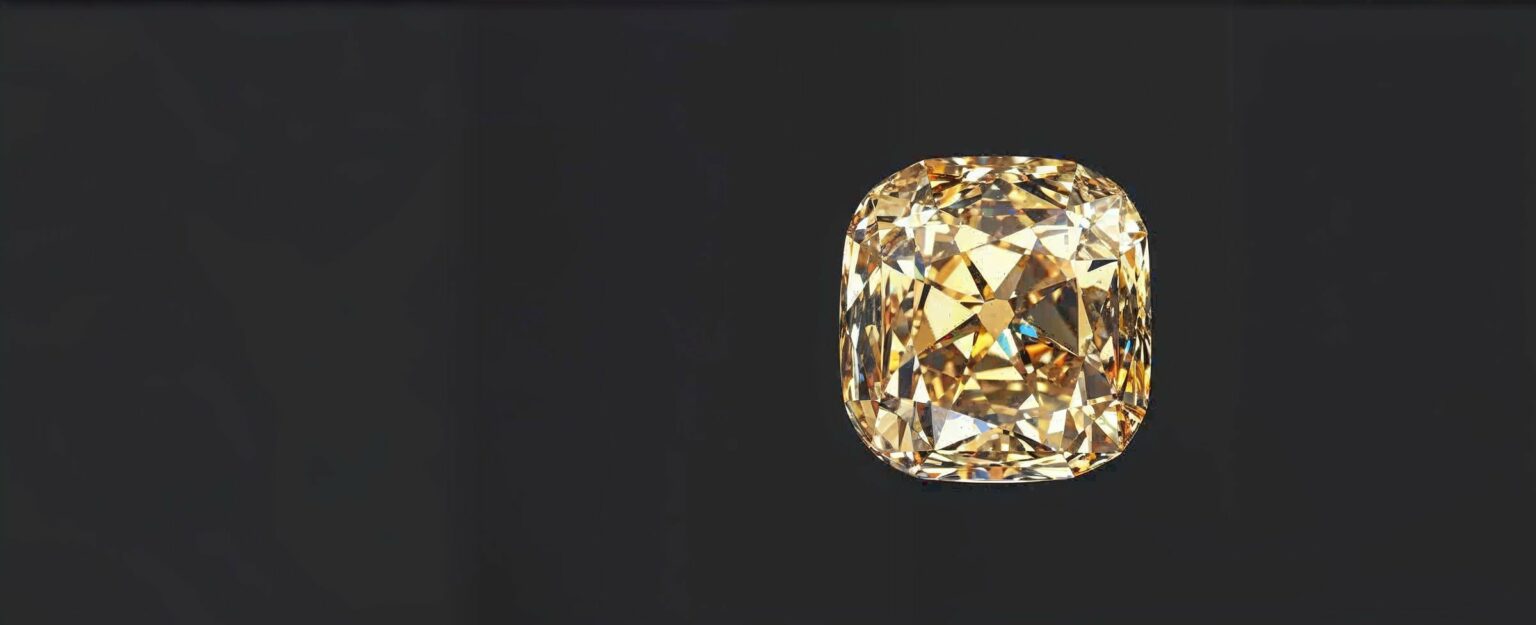Looked at with no regard for its 100-year history, the Tiffany diamond is, according to experts who have studied it closely, the following: a bulkily cut cushion-shaped stone weighing 128.51 carats, borderline fancy light to fancy yellow and VS, not flawless clarity as most texts state. Seen in this light, purely as a diamond with no past, these experts estimate its present value at $1 million.
Yet as a historic stone, the same experts say the Tiffany diamond could probably command $5 million today if Tiffany put it up for sale.
This five-time jump in value is due to the Tiffany name and nothing else. The diamond’s worth stems far more from a glorious history rather than any gemological glory.
“Frankly, the Tiffany diamond isn’t all that remarkable, one of the appraisers who puts its worth if sold privately at $5 million says somewhat clinically. “Because it is cut so thickly, it looks much smaller—around 80 carats—than it actually is. Further, the color is nothing to rave about.” Then his manner changes abruptly. “But factor in provenance and we are talking about another stone entirely.”
A Matter of Mystique
A generation ago, when standards for fancy-color diamonds were looser and less critical, the Tiffany diamond was accorded an aesthetic stature many versed in colored diamonds feel it no longer merits. These dealers take exception to the frequent, nearly promotional descriptions of the stone found in trade and gemological literature as, among other things, the largest and finest canary or golden diamond known. Unfortunately, writers continue to take these accolades at face value rather than at arm’s length.
Nowadays, however, a good many experts believe the Tiffany diamond deserves far more as a marketing marvel than a natural wonder. That’s probably as it should be, suggests one jewelry historian, given the fact that the store’s founder, Charles Tiffany, often cited the influence of P.T. Barnum for much of his success. Certainly, the Tiffany diamond testifies to the power of provenance in establishing the reputation and worth of many gems and pieces of jewelry. By provenance we mean the careful documentation of a gem’s background or origin (sometimes both) and any consequent prestige conferred by such credentials.
“This isn’t meant to debunk the Tiffany diamond. To the contrary, every diamond dealer we know who has inspected the stone finds it attractive. But these very same people all agree they would have paid far less attention to the stone if it didn’t reek with a century of mystique. Seen from the perspective of provenance, the Tiffany diamond easily ranks among the most distinguished stones in history. In terms of American history, in fact, it is second only to the 45.52 carat Hope blue diamond on permanent exhibition at the Smithsonian Institution in Washington, D.C.
From Cape to Canary
Ironically, the stone spent its first 15 years at Tiffany large ly unheralded before being taken from wraps to rapture. Jewelry historian Mary Murphy Hammid, an appraiser with Butterfield’s auction house in Los Angeles, notes that no mention is made of the stone in either the first or second editions of Edwin Streeter’s important book The Great Diamonds of the World, published in 1881 and 1882 respectively. Why Tiffany hesitated to capitalize on the stone is a bit of mystery. Eminent gemologist George Kunz, then a Tiffany vice president, is said to have authorized its cutting in Paris during 1878 only after a year of planning- and then under his personal supervision.
Because he had it cut in a cushion shape, with 90 instead of the usual 58 facets, some historians, seconded by diamond dealers, believe Kunz was shooting for maximum strength of color-as opposed to fire-when viewed through the top. The trouble was, say experts, there wasn’t all that deep a color to begin with. “It’s definitely classifiable as ‘fancy’ but not ‘fancy-intense’ color,’ says a New York fancy diamond specialist.
Hardly surprising then that when the rough (eventually sold to Tiffany for $18,000) that yielded the Tiffany diamond was first found at South Africa’s famous Kimberley Mine in 1877, it was considered important mostly for its size and not its color. If anything, fancy yellow diamonds had become somewhat commonplace after the first major South African diamond strike in 1867. A decade later, the country was a well-known producer of yellow diamonds, many of them spectacularly big. Jewelers will do well to remember that the term “cape,” a pejorative trade term for yellow, comes from South Africa. In time, of course, the trade substituted the far more euphonious term “canary” for many of the yellow stones it sold to the public. This may be why the Tiffany diamond is so often called a canary stone. But experts say the term “canary” should only be used for a few select stones that are intensely colored, something the Tiffany diamond isn’t.
The Pride of Chicago
Tiffany first unveiled its 128-carat behemoth at the Chicago World’s Fair in 1893, noting in its special guidebook to the event, “It’s not only the largest diamond in this country but is heavier by 23 and three-eighths carats than the well-known Koh-i-noor diamond.” When Tiffany showed its diamond again at the Pan American Exposition of 1901, it was still ballyhooed as the largest diamond in America.
By the time of the 1933-34 World’s Fair, again held in Chicago, the stone had solidified its status as one of the world’s most well-known fancy-color diamonds. According to Hamid’s painstaking research, the Tiffany diamond and the 42-carat bluish Emperor Maximilian stone were selected to represent the world of fancy colors at a $5 million diamond display that included a simulation of a South African diamond mine complete. The fair’s guidebook proclaimed, “with native laborers.” The diamond also took feature billing at the 1939-40 New York World’s Fair. In 1957, for, most appropriately, the Tiffany Ball in Newport, R.I., the stone was first set in a piece of jewelry—in this case, a necklace worn by Mrs. Sheldon Whitehouse, the event’s chairwoman.
At present, the Tiffany diamond sits alone in a special glass showcase across from the store’s diamond counter, mounted on a stem that extends out perpendicularly from the wall and bathed in strong yellow light to heighten its golden color. A 1971 book, The Tiffany Touch, says the stone is the store’s stellar attraction, a statement that holds true today and most likely will for as long as the stone is on display.
Please note: this profile was originally published in 1988 in Modern Jeweler’s ‘Gem Profiles: The First 60’, written by David Federman with photographs by Tino Hammid.
The photo of the 128.51-carat Tiffany diamond shown in the header image is courtesy of Tiffany & Co., New York.






